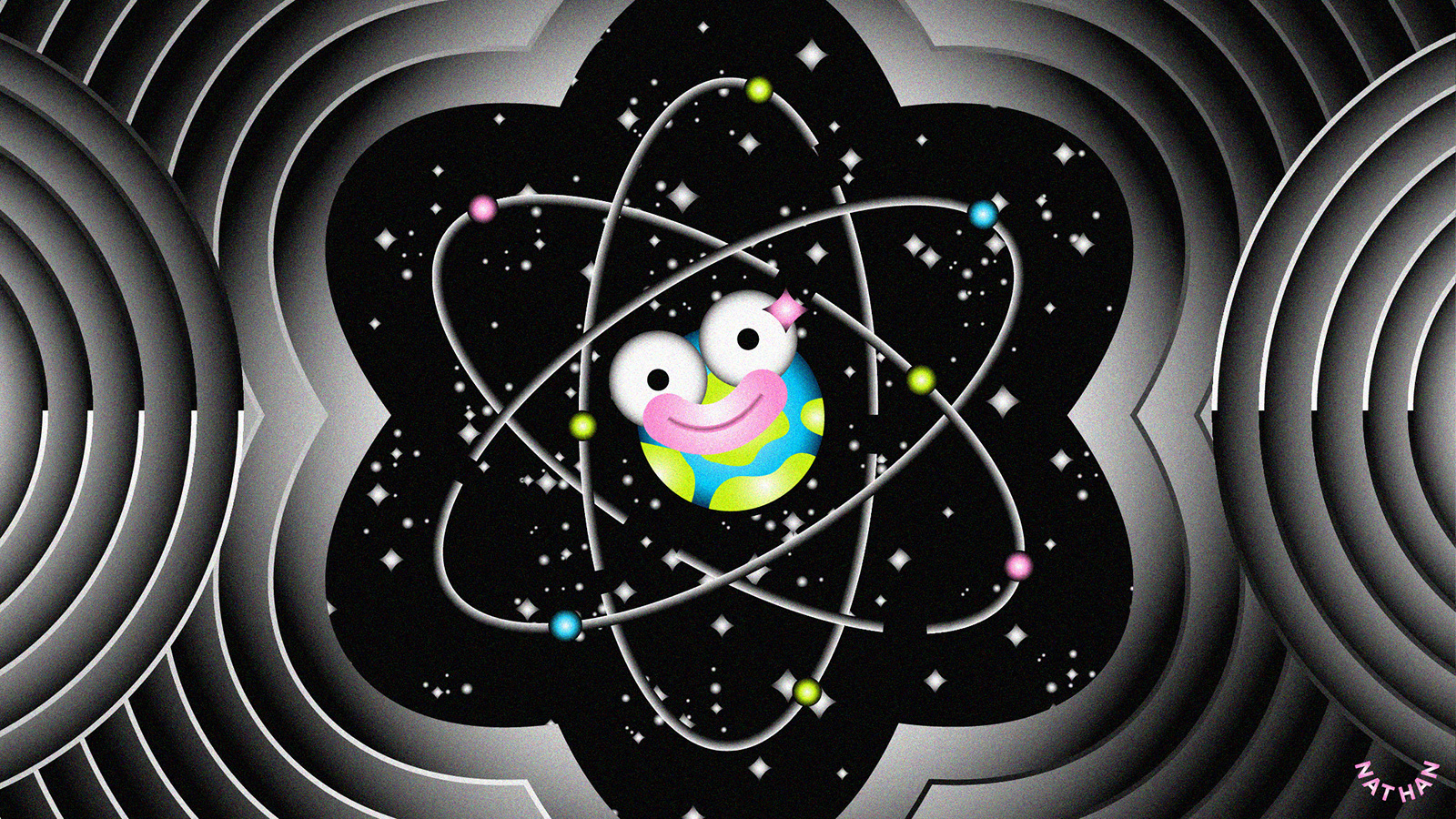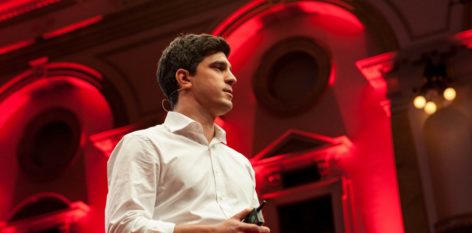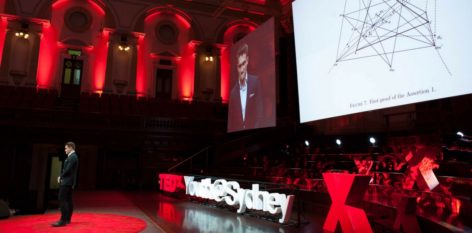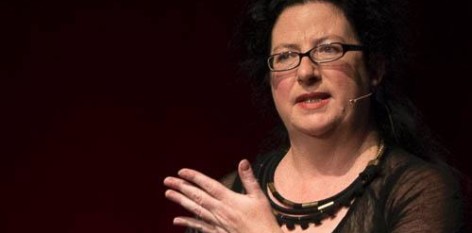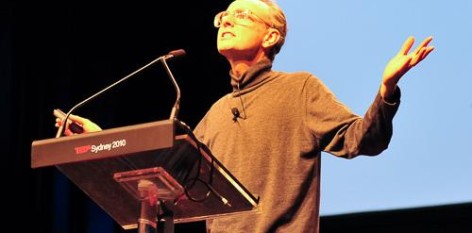Why does quantum physics make most people’s brain want to explode?
Before we begin to consider how nanotechnology might be able to positively impact the world, let’s ensure that those of us who are not quantum physicists (nor physicists or scientists of any kind) can also come along for the journey.
What is it about quantum physics that tends to make some people freak out?
After all, quantum physics is simply the study of the nanoscale–of atoms and subatomic particles. So far, so good!
But for many, it is almost as if our brains just shut down at the mere mention of things like quarks and electrons, let alone quantum entanglement and wave-particle duality. Let’s be honest who’s surprised.
The crux of such mind explosions can be easily illustrated in something like Schrodinger’s cat— the well-known paradoxical thought experiment presenting the idea that a cat can be both alive and dead at the same time, based on the wave-particle duality principle. And this duality principle, quite simply, is the notion that matter can exist as both a particle and as a wave. Too early for wine? Fine. Just make it a double espresso then.
Accepting that we don’t need to understand quantum physics
If you don’t get quantum physics, it really isn’t something to fret about and there is no need to run for the hills. To illustrate, let’s consider the words of renowned physicist Richard Feynman who said, “If you think you understand quantum physics, you don’t understand quantum physics.”
Similarly, TEDxSydney 2016 speaker and experimental quantum physicist, Michael Biercuk, does not permit the not-understanding of something, to stop it from being valid or important:
“Why must something be understood for it to be true or relevant? What does ‘understood’ even mean when there’s such a diversity of minds and cognitive capabilities among the population?”
So with that, we can rest assured that it is far from crucial to understand every last quantum detail. After all, quantum physics is manifested at scales that humans don’t actively occupy.
This is terrific news not only because it helps encourage our exploration of the fascinating world that quantum mechanics reveals, but also because of the immense potential power that it offers us.
Eliminating the rules to create new, unlimited possibilities
The laws of classical physics become completely undone at the atomic and subatomic level. What is so exciting about this, is that the standard physical limitations which apply to everyday life cease to exist. The realm of what is possible, therefore, becomes entirely different.
In our world, for example, when you throw a ball at a wall, it will of course bounce right off. But at the subatomic level, it can do what is known as quantum tunneling and a tiny molecule could potentially pass right through the wall.
While some might view this phenomena as totally bizarre and unrealistic, really, it is simply something that is not commonly known and therefore isn’t widely accepted or understood.
Humanity once believed that the earth was flat and anything that suggested otherwise was complete nonsense. This viewpoint is laughable today and we wonder how humankind could have ever had such a limited vision.
Could the same also be said of our perceiving the quantum world as spooky and nonsensical?
What does the quantum world actually offer us?
Many scientific fields, including the medical world, are turning to quantum mechanics in an attempt to solve some of our biggest global challenges.
Professor Paula Hammond explains in her TED talk how she is developing ways to fight the most stubborn of cancers from being able to engineer at the molecular level:
“It’s not just about building really elegant science. It’s about changing people’s lives. It’s about understanding the power of engineering on the scale of molecules.”
Quantum computing is also expected to resolve some of the world’s biggest problems, such as the global food crisis, the environment and clean energy.
Dr. Jerry M. Chow, Manager of Experimental Quantum Computing at IBM Thomas J. Watson Research Center, describes how quantum computing works and explains the potential that it offers in his TED Institute Talk:
“I never thought that something as esoteric and weird as quantum mechanics could reveal how we, as living beings work. And inside this very package [holds up a quantum processor i.e. a thin metal plate approximately 5cm x 3 cm] are tiny circuits that obey the laws of quantum mechanics, and have the potential to unlock real chemistry and real biology.”
[Side note: As the laws of probability would have it- and this was only discovered after this piece was written- when Jerry Chow was an undergraduate at Harvard he worked with Michael Biercuk, who was also at Harvard completing his PhD. It’s a small quantum world all right.]
At the moment, however, it is impossible to define or accurately forecast what nanotechnology will deliver, given that it is so difficult to work with things that cannot even be seen. After all, how do you actually try to craft something that can deal with the nothingness of a nanoscale, being only one billionth of a metre?
The recent development of the world-class research facility at University of Sydney (at which Michael Biercuk is an Associate Professor), will no doubt greatly assist with this. This unique nanoscience hub provides the hyper controlled environment required to conduct experiments at the nanoscopic level and offers an unprecedented combination of technical performance.
However it is not only professors and field specialists who are engrossed in the vast possibilities that the nano-world boasts.
American podcast host Joe Rogan has spent hours with a variety of guests, such as English physicist Brian Cox and retired physics professor Dr. Amit Goswami, intimately dissecting and feasting on all things quantum mechanical. Meanwhile Canadian Prime Minister Justin Trudeau confesses to being a passionate fan of quantum computing.
Yet just as it would have been hard to imagine what the world wide web could do before it was built, it can be nearly impossible to conceptualise how a quantum computer can be used, or how the quantum world can be fully leveraged to positively empower and change the world.
As Biercuk expresses in his Ideas That Travel talk:
“In the history of innovation, we have seen over and over again, that the most profound impacts of new technologies are those that were least anticipated. Quantum tech is poised to deliver new capabilities unlike nearly anything that’s come before, and to radically transform our world.”
Instead of thinking outside the box, perhaps the answer partially lies in learning how to get rid of the box altogether?
Maybe that’s what Einstein meant when he said “Imagination is everything”.
Watch Michael Biercuk’s 2016 TEDxSydney Talk – Building The Quantum Future
Illustration for TEDxSydney by Nathan Nankervis.
